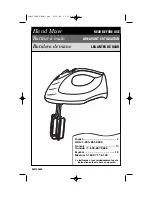
7-1
O w n e r ’ s M a n u a l
Automation
7. Automation
Automation moves are divided into two basic
types:
snapshot
and
dynamic
. Snapshot auto-
mation makes it possible to instantly reset all
automated console settings to a predetermined
fixed (or static) position with a single command
(snapshot recall). Dynamic automation allows
you to record and play back any parameter
changes, like fader positions or mute toggles,
in real time while locked into time code.
The Digital 8•Bus is powered by Mackie’s
Real Time OS
™
automation software. Upon
initial power-up, the console Automation
Section is bypassed. Prior to beginning an
automated mixing session, then, it is necessary
to disengage the BYPASS button in the
Automation Section and select the desired
automation mode(s). Note that snapshot
automation (described in Chapter 5, “Creating
and Storing Snapshots”) is active at all times.
Bypass is only relevant to snapshot automation
when recording or playing back snapshots as
events in a dynamic automation pass. (See
“
A word of warning about snapshot automation
relative to dynamic automation
,” page 7-2.)
The screen equivalents to the buttons in the
Automation Section are found in the Locator
window (click on the Locator button in the bot-
tom menu bar on the screen).
We suggest that you read this entire chapter
before digging into automation, because there’s
many ways to “skin a cat” in automation land.
It’s best to know how to perform these functions
before you go too far. This chapter covers the
five automation modes, filters, and a number of
different ways to initiate and exit automation.
Dynamic Automation
Dynamic automation writing overwrites
ALL subsequent events for a changed para-
meter while time code is running. For example,
if you put a channel into write mode with the
FADERS button selected, any fader moves that
were previously written on that channel are
erased while you edit the fader moves for the
channel, but only if timecode is received. If the
Write switch LEDs are solidly lit, but no
timecode is received, there will be no data
written into the automation buffer.
Dynamic automation has four modes of
operation: Bypass, Absolute (or Replace), Auto
Touch, and Trim Levels.
Bypass
Bypass is engaged as the default write-safe
mode on startup. It is used to stop all automa-
tion playback and recording. You must turn off
the BYPASS button in order to begin automat-
ing a session. Re-enabling Bypass will
extinguish all currently armed Write tracks (so
it’s a quick way to completely disable all cur-
rently enabled channels). Bypass cannot be
toggled on and off while timecode is running.
Note:
When performing functions other than
automation, such as tracking, live mixing, etc.,
the BYPASS button should remain engaged,
preventing any inadvertent automation writing
(or playback, if any exists).
Upon completion of an automated mix,
BYPASS should be engaged to prevent inad-
vertently modifying the saved session.
Absolute Mode
Absolute mode is sometimes called Replace
or Update mode. There is no button to engage
Absolute mode; it is the default mode whenever
Bypass is turned off (and Auto Touch and Trim
Levels are off).
The channel WRITE button must be manu-
ally engaged to replace current values with
new values. You must also have one of the au-
tomation filters active in the Automation
Section: FADERS, MUTES, PAN, or ALL. You
can engage the WRITE button prior to rolling
tape (punch-in), but the automation will not
record moves until approximately 22 frames af-
ter stable timecode is received. It is best to
write-enable after timecode is being received,
or pre-roll tape prior to when you intend to
write the automation.
The fader motor is disabled while WRITE is
engaged, and a channel remains in Write mode
until it is manually turned off (punch-out), or
STOP is pressed in the Transport Section, or
timecode stops. The fader motor is enabled
once WRITE is disengaged.
See also “Write Standby and Master
Record” on page 7-4.
Auto Touch Mode
Auto Touch mode is a variation of Absolute
mode: all channels are automatically placed in
Write mode as soon as a control is altered.
Only the control being altered is written to auto-
mation;
all other automated events from
previous passes for the channel remain intact
unless you alter a control. Auto Touch is great
for minor tweaks as you get closer to the final
mix: small fader rides, a mute you may have
missed earlier on, etc.
As in Absolute mode, you must also have
one of the automation filters active in the Auto-
mation Section: FADERS, MUTES, PAN, or
ALL. The channel remains in Write mode until
it is manually turned off (pressing the WRITE
button for a punch-out), or if STOP is pressed
in the Transport Section, or if timecode stops.
Содержание 8-BUS Series
Страница 49: ...3 16 D i g i t a l 8 B u s Start Up ...
Страница 57: ...4 8 D i g i t a l 8 B u s Connections ...
Страница 77: ...5 20 D i g i t a l 8 B u s Preparing for a Session ...
Страница 177: ...7 20 D i g i t a l 8 B u s Automation ...
Страница 207: ...D 2 D i g i t a l 8 B u s Apogee UV22 ...
Страница 219: ...F 4 D i g i t a l 8 B u s Optional I O Cards ...
Страница 227: ...H 2 D i g i t a l 8 B u s Upgrading ...
Страница 232: ...J 3 O w n e r s M a n u a l Screen Shots Surround Sound Matrix Mackie FX Control Panel IVL Vocal Studio Control Panel ...
Страница 233: ...J 4 D i g i t a l 8 B u s Screen Shots Disk Manager File Menu Channel Menu Automation Menu Edit Menu Windows Menu ...
Страница 235: ...K 2 D i g i t a l 8 B u s ...
Страница 237: ...D i g i t a l 8 B u s ...
Страница 239: ...D i g i t a l 8 B u s ...
















































